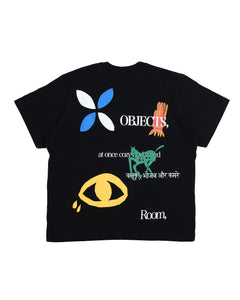The day after the excursion to Kumamoto. Usually I can sleep anywhere and anytime, but I could only sleep lightly and woke up early. Although I'm grateful to get up early because I needed to make small trip again on that day, I felt imperfect and gloomy. I went outside with the condition of the half-sleepy head and body supporting each other.
Took the subway to Hakata Station and then the Shinkansen. Today I'm heading to Kurashiki City, Okayama Prefecture.
Speaking of Okayama, Kojima. It is famous as a denim producing area that is widely known overseas.
But today I'm not visiting Kojima, but Kurashiki. There is the Kurashiki Dyeing Spinning and Weaving Studio (KDSWS) since 1953.
The Kurashiki Knotting made there was the purpose of this trip.

From Kurashiki station, I walked to the destination. As I approached my destination, I enjoyed the view of the increasing number of old-fashioned buildings in the cityscape, and the beautiful view with the canal spread out.
Kurashiki Museum of Folklore and the KDSWS in the center of the scenery. Coupled with the scenery around me, I fell in love with the beauty of the building, but I regained my mind and entered the Folk Crafts Museum.

When I told my name at the reception, Ms. Ishigami, who runs the KDSWS, welcomed me.
The KDSWS is a school that teaches natural dyeing techniques and how to make textiles. This time, I visited an exhibition of research students and graduates, which is held once a year.

The KDSWS welcomes about 8 to 9 students every year. In addition to the limited number of people, there are many people who sympathize with the philosophy, and every year there are more applications than the capacity, and it may take several years to enter the school.
After entering the school, they learn from the basics of dyeing and weaving. Not only the weaving technique, but also the process before that, spinning the yarn from cotton. They will spend one year learning each process and practicing so that they can do all the processes by themselves. The final graduation work is to weave the fabric for one kimono.
We moved from the exhibition site and had a look inside the KDSWS.
The rug laid at the entrance is from 1951. It was placed at the entrance and stepped on by many people every day, and I was surprised that something with such a load remained unpierced and unbroken.

In addition to technical guidance, the students live together at this institute. By doing so, the lifestyle that changes in each season will be instilled in the body. It is said that it has been a long-standing rule to use the items provided in the studio instead of bringing in personal items such as tableware. The tableware used in the studio is folk craft vessels, baskets, lacquer ware, etc., and there are almost no plastic products.
In this learning environment where you can learn the whole way of life, the founder of the KDSWS, Mr. Kichinosuke Tonomura, said, "Every day, by touching the real thing and getting discerning, you should acquire the ability to choose what is really suitable for your life."

The reason why I chose Kurashiki Knotting for Anonymous Ism store was, of course, that I was first attracted to its beautiful appearance. However, the more I knew it, the more I sympathized with its spirit and philosophy. Mass-produced products that are marketed for profit and are mass-produced in consideration of efficiency. Label it brand and sell it at a price that is many times higher than the price originally bought from the producer. I do not deny it, and I understand that there is such a business. But sometimes I get tired of it. Now that a lot of things are overflowing, we want warm things made by humans, not cold mass-produced things. Kurashiki knotting is not a brand. A person who seeks fame or status as an artist will never become a student at the KDSWS.
It embodies the technique and the desire to convey its thoughts, which have been passed down for nearly 70 years from anonymous ancestors who are not exposed.

Kurashiki knotting was originally made as a rug for a chair, but due to the beauty of its pattern, it is sometimes displayed on the wall as a decoration. However, Ms. Ishigami wanted to be used as a chair rug, which is the original purpose. I myself found it a wonderful use to decorate the wall, like the display at an exhibition. When I told her that, She said "If we don't make it on the premise that it will be used, the mind that tries to make good things is spoiled. Considering that it can be used for many years, such as the density and the structure, it is made so that it can withstand it. I think that diluting such thoughts will lead to a decline in technique." Ms. Ishigami said that, and she was a sincere desire to convey the tradition that she has preserved since the establishment of the KDSWS. I was very impressed to feel that this feeling is the source of beautiful knotting, which has been loved by people for more than half a century and has been passed down continuously.

After leaving the KDSWS, I walked around the town of Bikan Historical Quarter for a while. It is said that the beautiful cityscape was not left by chance, but was preserved by the efforts of many people, including the Kichinosuke Tonomura. Today, I can enjoy this scenery, see the beautiful Kurashiki knotting, and have an exciting experience, I could not stop appreciate again that it was all because there were people who tried to convey them.



